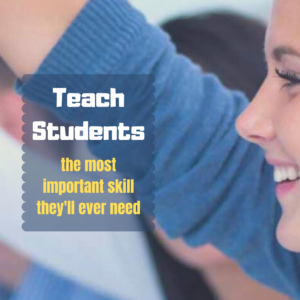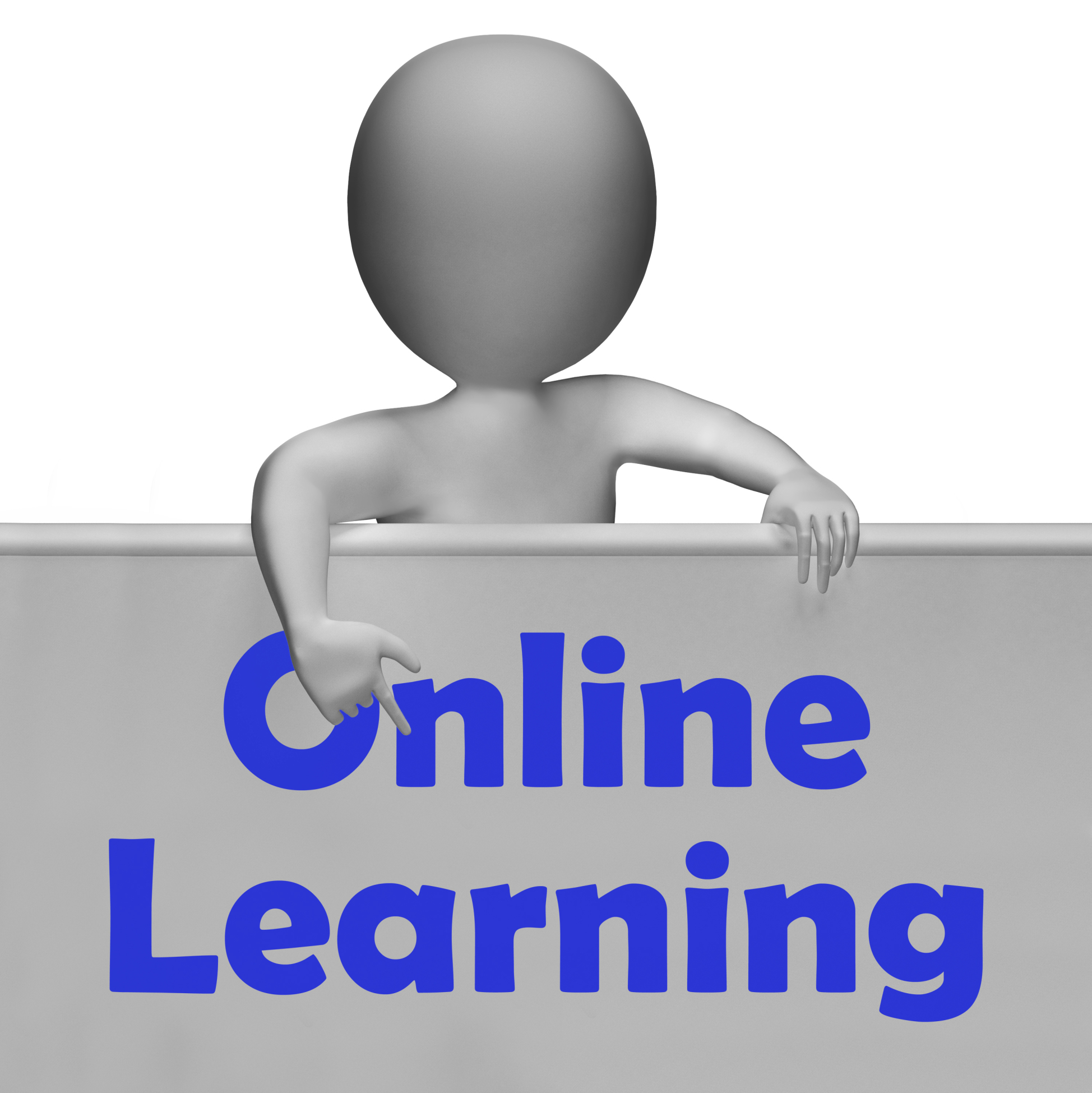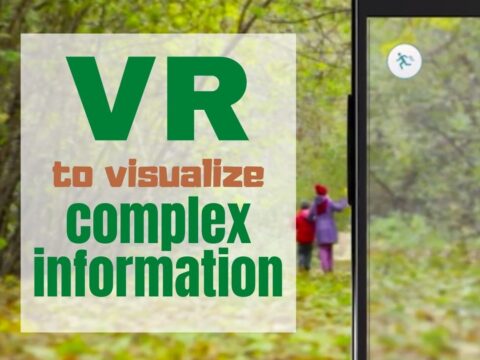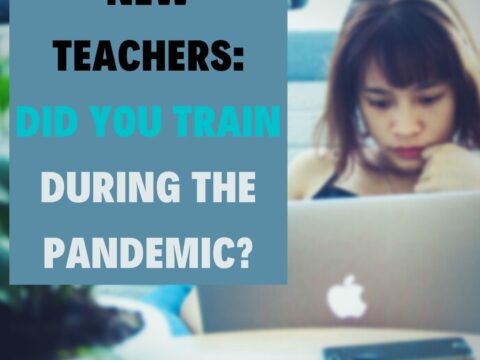Every teacher I know understands it’s not the 3R’s or science or even history that provides fundamental skills for thriving in life. If you doubt that, read the quote below from a Harvard professor about the half-life of learned skills. No, it’s something more basic, more intuitive, and happens to be the holy grail of teacher goals for students.
Learn how to learn
Here’s how to make this easy, from an Ask a Tech Teacher contributor:
***
 In the past, a university degree provided a majority of graduates with the skills they needed to succeed in their chosen careers. In the 2020s, this is no longer the case. Today, according to research conducted by Harvard Business Review and Deloitte, a college degree typically provides students with skills that have a half-life of only 5 years.
In the past, a university degree provided a majority of graduates with the skills they needed to succeed in their chosen careers. In the 2020s, this is no longer the case. Today, according to research conducted by Harvard Business Review and Deloitte, a college degree typically provides students with skills that have a half-life of only 5 years.
That means it won’t be long before even college-educated employees will need to upskill or retrain to remain employable.
The main takeaway: Learning how to learn is the single most important skill that our students will need to master if they hope to participate meaningfully in the fast-paced, technology-driven workplace of the future.
Yet many students do not have a solid understanding of how to effectively go about the process of upskilling. According to research published in the Instructional Science journal, individual students experience a broad variety of differentiation in their understanding of how to undertake the learning process. Sadly, it is possible for some students to make it all the way through twelfth grade without ever fully grasping the basics of how to learn.
In hindsight, it’s easy to see how this could happen. As educators, we are each tasked with teaching our students a specific body of knowledge. The knowledge typically encompasses highly focused topics such as reading or math or biology. We know our students will be tested on the knowledge that we’ve been trusted to impart to them. Our livelihoods directly depend on whether or not they will excel at the resulting tests. There isn’t room in our workdays to deviate far from the material that will be covered on the tests.
Rarely, it seems, is anybody ever specifically tasked with teaching students a step-by-step course in how to learn. Yet, collectively, if we fail to teach them this skill, we ultimately fail in our mission to equip our students with the skills they’ll need to succeed in their careers — and also to succeed as functioning members of a technologically advanced society.
How, then, can we take action to teach our students how to learn? The following are five ideas we might each have the opportunity to implement as we approach the task of teaching our everyday curriculum to our students:
1. Teach Students to Embrace Technology and Remote Learning
In the 1450s, the popularization of the printing press revolutionized the processes of teaching and learning. In the 1990s, the popularization of the internet was similarly revolutionary. Nowadays, mobile technologies are shaping up to be just as ground-breaking. If today’s students hope to be able to tap into all the educational opportunities available to them, they will need to have an understanding of how to utilize these technologies.
Ask a Tech Teacher offers many resources for teachers who wish to introduce students to education technologies in an age-appropriate way. If this is an area where you need help, the following pages will get you started:
- Start Here: Introductory pages
- Free lesson plans for helping teachers integrate technology into their digital classrooms.
- Tech ed resources – online classes
- How to build lifelong learners
At times, remote learning can be just as confusing for parents and teachers as it is for students. Our site is designed to provide resources for helping everyone get past the confusing parts as quickly as possible. If you have comments or questions along the way, our message board is a helpful resource for interacting with other educators to get the answers you need.
2. Share Useful Learning Resources Other Than College and University
There are many resources available to students who wish to continue their education after high school. Some of these courses are offered through the university system, but many others are made available outside of traditional academia.
In the recent past, many parents and educators have been pushing students to attend college – which, of course, is a path that offers students considerable long-term benefits. However, it would also be beneficial for these authority figures to make students aware of the countless additional resources that are available to them outside of traditional academia.
Even students who will attend college should ideally be made aware of these resources. They will likely prove to be helpful in the future at times when students’ university-acquired skills inevitably become outdated. Continual upskilling has now become an ongoing necessity, even for university graduates.
The following are a few examples of learning resources that are available for ongoing education outside of high school and university:
Certification Programs – Certification programs are typically training programs that are offered by tech companies or other organizations outside of traditional academia. For example, Microsoft offers certification programs to professionals who wish to gain mastery of one or more of their varied software products.
After completion of a certification program, the certificate holder may then have an advantage when seeking employment from organizations who want to interview candidates with those specific software skills; the certification gives them an endorsement directly from the company who manufactures the software.
Certifications aren’t just for tech professionals; they are available for workers in a variety of specializations including human resources, management and many other niches.
Massive Open Online Courses (Sometimes referred to as MOOCs) – MOOCs are readily available courses that are presented online. Frequently, they are video-based college-level courses offered by their creators at either a discounted price or for free. They lack many of the typical hurdles to college course enrollment such as class size limits and the need for acceptance by a university admissions committee.
MOOCs are not an ideal way for most students to learn. This is because they don’t usually offer opportunities for face-to-face discussion, and they also tend to discourage literacy. Nevertheless, they do have their uses. Arguably, they are best used for learning course material in subjects like math and coding where literacy skills and class discussions aren’t typically core objectives of the course material.
MOOCs are available from a variety of sources including Coursera, edX and individual participating universities.
Khan Academy – Khan academy is a free resource for learning a variety of subject material online including math, grammar, computing and many other subjects. Many homeschoolers take advantage of these materials for educating their school-age children.
Duolingo – If your students want to learn any of the world’s major languages, Duolingo offers resources that they would be likely to find helpful.
Global Resources – It is becoming increasingly important for students to embrace diversity and multiculturalism in their learning. You can empower your students to embrace diverse perspectives by encouraging them to seek out resources from countries other than their own.
Thanks to the availability of the internet and free translation software, your students can easily access books, internet articles and even academic courses and degree programs from other countries. One example: In the past, your students probably wouldn’t have easily been able to enroll in a course about aboriginal perspectives without traveling to Australia; however, there is a course available on that topic that is now available to anyone, from anywhere in the world.
It isn’t necessary for your students to excel at a foreign language to make use of English-language resources from Canada, Australia, the UK and South Africa. These can all provide helpful insights for English-speaking students from the United States.
One specific example of where these resources could be useful is if you have students who aspire to be educators at various international schools. Of course, students have the option to get educated in their home country, but it could also be helpful for them to seek perspectives from other countries, too.
In particular, they’ll find a variety of wonderful resources available from Australia, a country which has made a concerted effort to attract international students to its academic institutions. Some available resources from Australia include free and paid teachers’ aide courses; TESOL diploma programs; and countless university bachelor’s and master’s degree programs that are currently being taught online to an intentionally diverse audience of students from all over the globe.
English-speaking students need not be limited to consuming materials that are made available in English. Those taught in foreign languages can give students insights they would be unlikely to acquire in their home country. This can also provide them with motivation for practicing the skills they’ve acquired in their Spanish, French or other foreign language classes.
3. Demonstrate the Process of Reading With a Highlighter
There are some strategies for retaining information that are so easy, and seemingly so obvious, that they hardly seem worth pointing out. One of them is the technique of reading the assigned course material once through, and then returning to it a second time with a highlighter in hand to mark the most important points.
Experts at the Programme for International Student Assessment (PISA) have pointed out that this strategy can help students to perform significantly better on their tests.
Yes, this simple technique probably seems totally obvious to you as an educator; but if nobody has taught it to your students yet, it most likely isn’t obvious to them. This one is so quick and easy to pass on that it’s a no-brainer to take a few moments in the classroom to demonstrate it for your students.
4. Teach Students to Make Flash Cards
You’re no doubt already aware that when rote memorization is needed for learning new material, the humble flash card is one of the quickest and most effective methods for mastering it.
This is because flash cards stimulate the brain’s mechanisms for active recall. Every time a student uses a flash card, the engagement process helps to create improved neural connections that reinforce the student’s memory of the information.
Do your students know this? They are most likely not aware of how to use flash cards unless someone has taught them how to do it. You’ll want to consider demonstrating the use of flash cards to them at the time they’re learning simple math like multiplication, division, or foreign language vocabulary words.
It’s also helpful to share with them a simple explanation of why flash cards are effective. You can point out that flash cards are useful for learning a variety of concepts and encourage them to continue using flash cards any time they want to memorize information quickly.
5. Encourage Students to Learn Kinesthetically
People don’t always retain what they read; but, most people do retain the concepts they’ve learned when they’ve been an active participant in the learning process.
So, whenever possible, break up long lectures to incorporate activities that compel students to engage with the content you’re teaching. Encourage them to physically, actively participate in the learning process rather than just passively taking in information.
For example, you could teach them how to create graphs or diagrams that illustrate the concepts they’ve learned. It’s helpful to further explain to them that they can use the diagramming skills you’re teaching them at any time they wish to solidify their understanding of numerical concepts.
Considering that “big data” is becoming a cornerstone of corporate business strategy in virtually every industry, data literacy is now a critically important skill for success in the workplace. Graphing and diagramming, which contribute to data literacy, can also become a useful component of the lifelong learning process.
It’s also helpful to extend the learning process beyond actual class time. If you’re able to take students on a related field trip, perhaps to an aquarium, science museum or children’s museum that offers relevant interactive exhibits, those experiences could be helpful for further solidifying the information they’re learning. At the same time, you can encourage them to perpetually seek out activities that will help them to expand their horizons beyond their everyday experiences in the classroom – or, later, the workplace.
It’s Worth Considering Your Own Unique Strategies for Teaching Your Students How to Learn
There are countless other ways you could approach the task of teaching your students how to learn and sharing with them the resources they’ll need for teaching themselves. These 5 ideas only begin to scratch the surface of what is possible. If any of these suggestions could be easily implemented in your classroom, they’re likely to be beneficial for your students.
As an educator, you’re already an expert on the topic of learning – and, no doubt, you’ve already mastered a wealth of useful techniques for teaching yourself new things. Once you start pondering the importance of empowering your students to learn how to learn, you’ll no doubt have your own ideas on what you could do to motivate and inspire them to take charge of their own learning activities. Overall, one of the most important things you can do is to help them understand that they will need to use the educational resources you and your colleagues are sharing with them to continue teaching themselves long after they have graduated from school.
More on education reform
13 Teaching Strategies to Shake up Your Remote Teaching
How to Assess Digital Literacy
8 EdTech Trends to Watch Out for This 2020
Jacqui Murray has been teaching K-18 technology for 30 years. She is the editor/author of over a hundred tech ed resources including a K-12 technology curriculum, K-8 keyboard curriculum, K-8 Digital Citizenship curriculum. She is an adjunct professor in tech ed, Master Teacher, webmaster for four blogs, an Amazon Vine Voice, CSTA presentation reviewer, freelance journalist on tech ed topics, contributor to NEA Today, and author of the tech thrillers, To Hunt a Sub and Twenty-four Days. You can find her resources at Structured Learning.



































